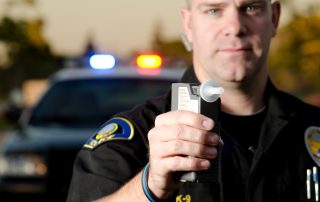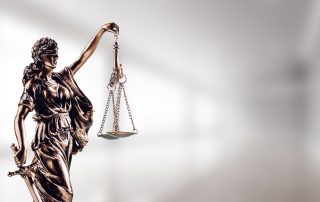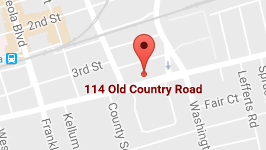In New York, a driver can face criminal charges even if they were not the liable party in the accident. The law requires all parties to an accident to remain at the scene to provide contact and personal information or call for help if people have been injured.
Sometimes, one might be forced to leave the scene for various reasons, and hit and run charges may be brought against them. The consequences are dire, but a Long Island criminal justice attorney can offer the aggressive defense that can save you from prison, fines, and all manner of repercussions.
How is Hit and Run Classified in New York?
The severity of your hit and run charges depends on the circumstances of the incident. A hit and run defense attorney in Long Island, NY, can listen to the facts of the accident and determine how you should be charged. Your lawyer will make sure that the prosecution does not charge you of a more serious crime than is prescribed in the hit and run statute.
Traffic Violation
Leaving the scene of an accident that only resulted in property damage is a traffic violation. You must have failed to leave behind your insurance information or report to the nearest police station.
Class B Misdemeanor
Failing to provide your details at an accident scene where victims sustained minor injuries is a misdemeanor.
Class E Felony
Leaving a scene where other parties to the accident sustained severe injuries is more serious and is considered a felony.
Class D Felony
If there were fatalities in that scene, the charges brought against you would be a Class D felony.
What are the Penalties for Hit and Run in Long Island?
Defendants should expect higher penalties if the injuries were serious or fatal. But if the injuries were minor or only caused property damage, the consequences might be relatively lower. Ensure that you retain a Long Island hit and run defense attorney that will ensure that your rights are protected and that no one misuses the law to put you down.
- Property Damage. The fines should not exceed $250, and the imprisonment should not be more than 15 days.
- Failure to Provide Information. Defendants might be required to part with a fine of between $250 and $500.
- Serious Injuries Accidents. You should not be imprisoned for more than four years, and the fines should be between $1,000 and $2,500.
- Accidents that Resulted in Death. The court can only impose a fine of between $1,000 and $2,500. The prison term should not exceed seven years.
Will I Lose my Driving Privileges After a Hit and Run Incident?
Leaving a scene where an accident victim sustained injuries can result in losing your driving rights for up to a year. Even if there are no injuries from the accident, a CDL driver loses their license automatically by simply leaving the scene.
Regardless of fault or lack of it, the incident can remain in your record for several years. For minor accidents, the record can be removed on the first day of year four. If it resulted in life-altering injuries or death, the records could stay for up to 10 years.
How can a Hit and Run Affect my Insurance Privileges?
Hit and run in New York gives you three points on your driving record. Your current vehicle insurance company might cancel you, and you might be forced to look for a new insurance company.
Notably, your insurance rates will have risen dramatically, and your only option will be to get coverage from a high-risk insurance company. These rates will remain high for several years, and you might struggle to get it back to where it used to be. You can prevent all this trouble by doing everything it takes to beat your hit and run charges.
What Happens if I was Intoxicated During the Hit and Run Incident?
In most hit and run incidents, the law enforcers will try to determine whether the driver that left the scene was intoxicated or not. If they find you quickly, they may conduct chemical tests or ask you to take the breathalyzer test to check your blood alcohol concentration.
The police can also interview witnesses at the scene to determine if your behavior implied drug or alcohol influence. They can also check surveillance videos for such behaviors. And if it is established that the driver was not sober, they can be charged with Driving While Ability Impaired (DWAI), aggravated DWI, or DWI.
Depending on the facts of the case, hit and run DWI can attract other charges. Additional charges may include vehicular manslaughter, vehicular assault, reckless endangerment, and other criminal charges. The charges can be even more severe if you are a repeat offender, but a Long Island hit and run defense attorney can ensure that you get the best outcomes possible.
Can a Defensive Driving Course Improve my Case’s Outcome?
New York offers defendants opportunities to redeem themselves from the severity of the hit and run charges. For instance, the severity of your penalties can reduce if you take up an online defensive driving course approved by the DMV. So, as soon as you are notified of a hit and run charge, consider beginning the online course.
The course will allow you to:
- Refresh your driving knowledge
- Learn techniques for lawful and safe driving
- Prevent the loss of your driving rights
The course is offered under the Point & Insurance Reduction Program (PIRP), and it allows you to subtract up to four points from your driving record upon completion. However, it does not negate your future points. Speaking to a DMV before taking the course ensures that you know exactly how it will benefit your case and your driving record.
Legal Guidance from an Experienced Defense Lawyer
There is a plethora of defenses against hit and run charges. And an experienced criminal defense attorney can examine your case and determine the most appropriate defense for your situation.
Take advantage of the 80 years combined experience of the Mirsky Law Firm to defend yourself. More options are usually available at the early stages of the case. So take action fast.
Schedule a FREE consultation with us today. Talk to us at 516-299-6187 or 718-412-8322.













































